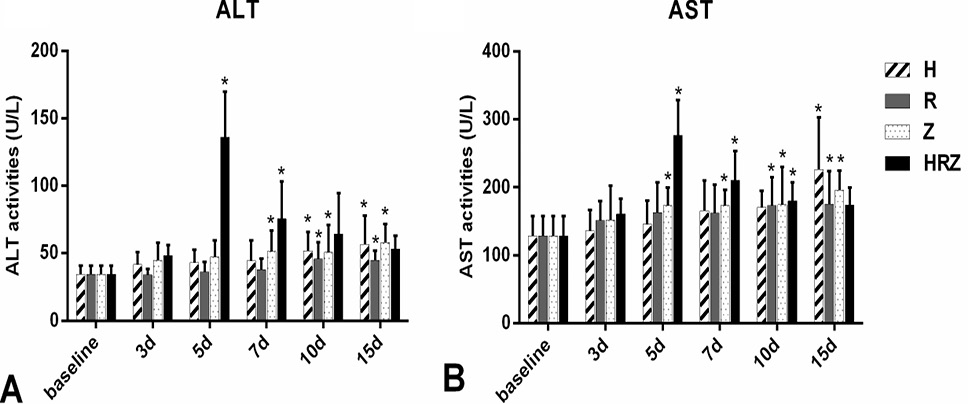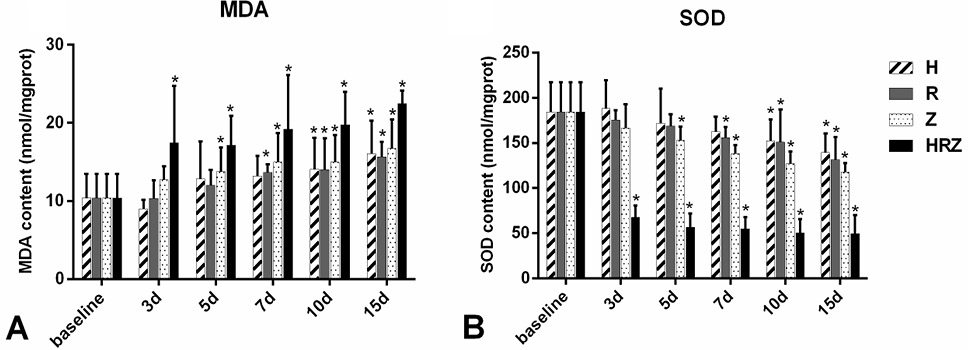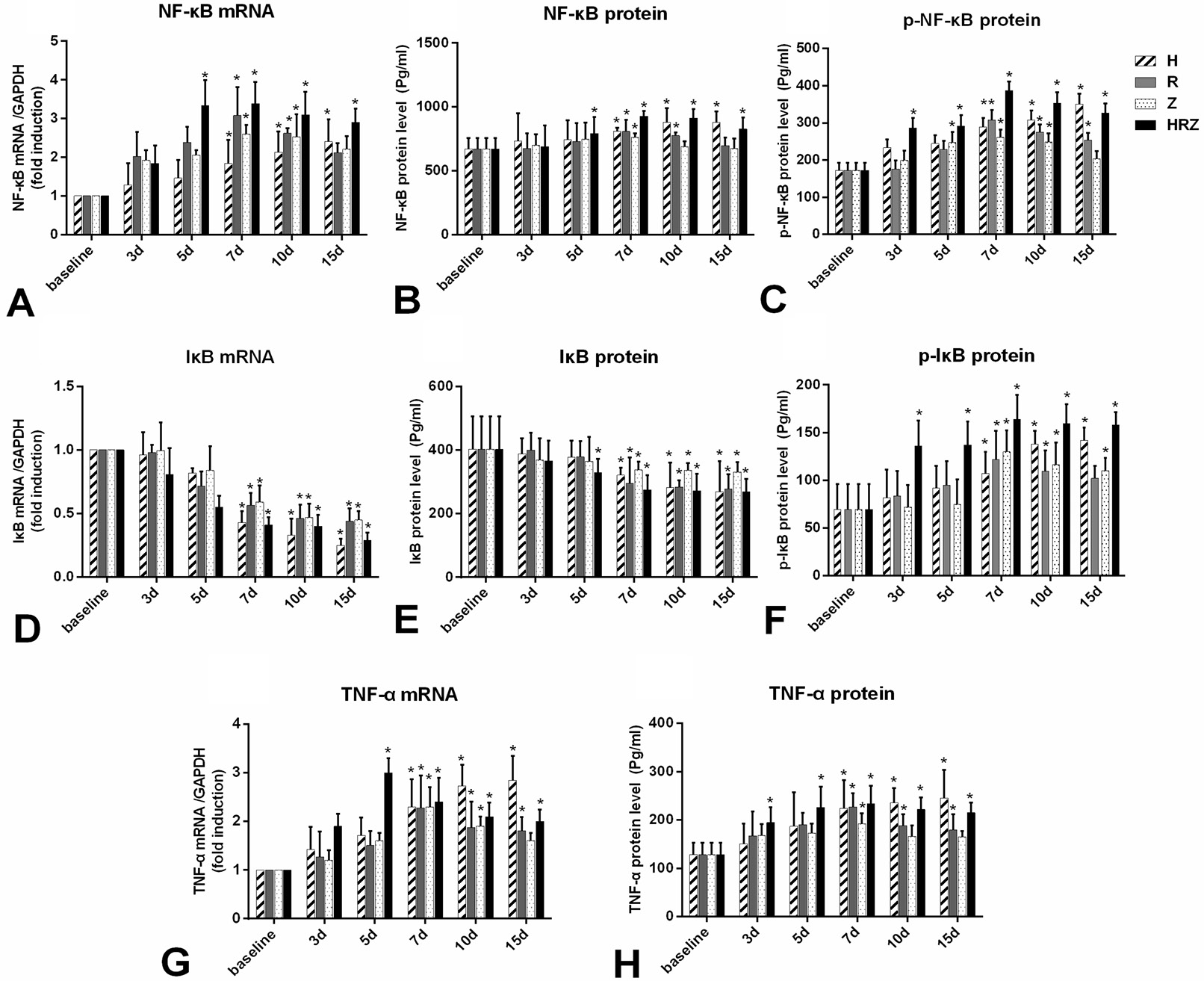Induction of Nuclear Factor κB in Different First-Line Anti-tubercular Drug-induced Liver Injuries in Mice
Induction of Nuclear Factor κB in Different First-Line Anti-tubercular Drug-induced Liver Injuries in Mice
Yuhong Li1, Dongxue Wu1, Xue Wang1, Mi Zhang1, Hanyu Zhu1, Zhe Shi1 and Fumin Feng1,2*
Histopathological changes in the liver tissue of mice in each group. Comments: Mice were treated with vehicle for control or anti-tuberculosis drugs for 3, 5, 7, 10, and 15 days, and then liver samples were processed routinely and stained with H&E for morphologic evaluation (original magnification × 100). D: Control; H: isoniazid, R: rifampicin, Z: pyrazinamide, and HRZ: INH + RFP + PZA.
Serum alanine aminotransferase (ALT) and aspartate aminotransferase (AST) levels of the different groups. Data are expressed as mean ± SD of n = 8 animals per group. *P<0.05.
MDA content and SOD activity in different groups. Data are expressed as mean ± SD of n = 8 animals per group. *P<0.05.
The mRNA and protein expression levels of NF-kB, IkB and TNF-α in different groups. Data are expressed as mean ± SD of n = 8 animals per group. *P<0.05.













